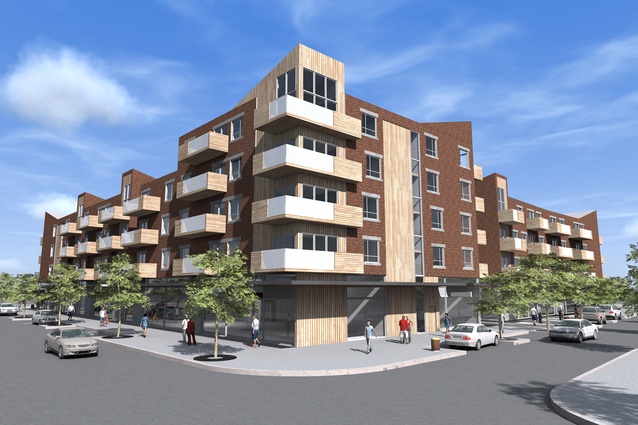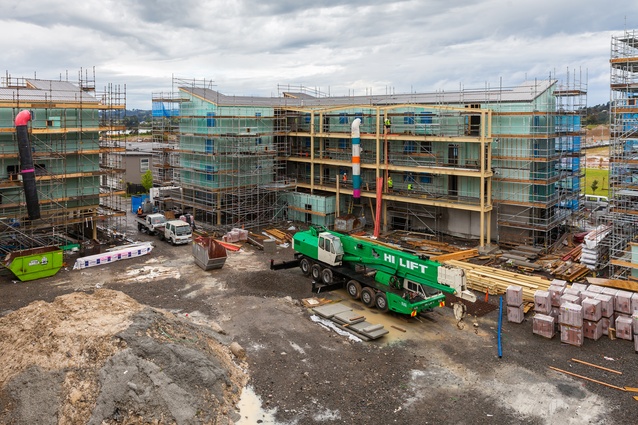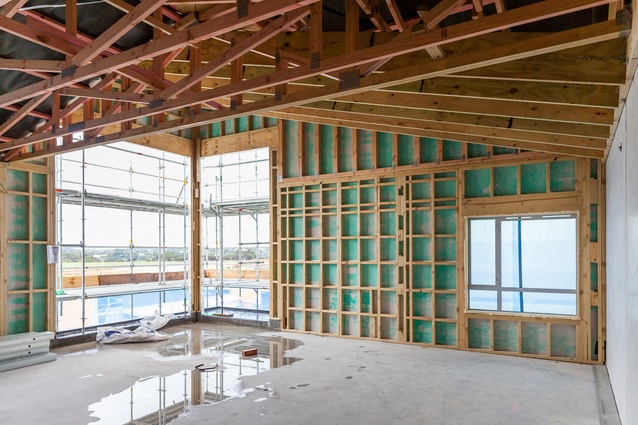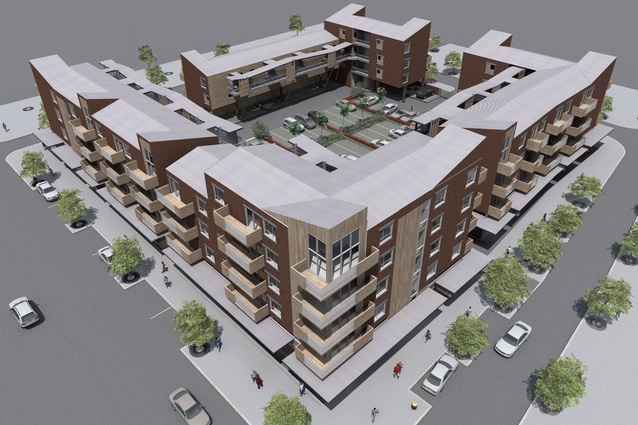A brick quartet
Hobsonville Point, a $2 billion residential development in West Auckland, was designed to contain predominantly a mix of stand-alone and terraced dwellings. But the first apartment complex in the fast-growing area, Brickworks, is nearing completion and will provide much-needed high-density housing at a lower price point.
Comprised of four buildings situated around a central parking court and rain garden, the complex will contain 60 apartments with ground-floor retail in two of the buildings.
The mixed-use nature of the $16.7 million development is integral to the success of Brickworks as a complex, and Hobsonville Point as an emerging community, Kalmar Construction director Peter Kay said.
“We are trying to develop a village environment.The mixed use nature of it is key to that and it’s a point of difference,” he said.
The four apartment buildings are named Clark, Carder, Holland and Crown. The first three are in honour of the early pioneers who, from the 1850s, began making pipes and bricks at nearby Limeburners Bay in an effort to drain the land, which was too rich in clay to farm. Their efforts initiated the ceramics industry in New Zealand.
The fourth name, Crown, references iconic New Zealand ceramics brand Crown Lynn, which traces its roots to this site.
“Brickworks’ design aesthetic is based on the early industrial buildings that were originally present on the site,” project management consultant Greenstone Group’s project director Shane Davis said. “The design utilises simple and practical brick cladding, which has delivered a solid, durable building with enduring visual appeal.”
All similar in construction, the four buildings utilise a conventional precast concrete panel and structural steel hybrid structure, which was built on raft foundations - due to geo-technical requirements the raft foundations were chosen over an initial design that had the building on piles.
MSC Consulting Group engineer Tom Donald said the nature of the cladding, along with the concrete reinforced structure, made the buildings relatively heavy.
The retail area has open floor plates of up to 20 metres and sits beneath the apartments, which all have a depth of eight metres.
Soft ground conditions meant the foundations were the biggest challenge for the design team. In initial testing, geo-tech reports showed there was a forest buried around 15 metres underground, which had the potential to cause problems for the initial pile foundation design so substantial raft foundations were used instead. “We had to excavate down to a metre and build a metal raft to distribute the loads across the ground,” Donald said. “A deep concrete raft tops the metal one and is up to 600mm thick in places.”
The apartments, which were not only designed to exceed seismic requirements of the New Zealand Building Code, but for energy and water efficiency, have a system that collects rain water off of the standard Colour Cote IBR inverted box rib roofing, draining it into underground tanks. It is then redistributed as grey water through the toilets in the apartments. Another conservation feature of the complex means rain falling on the central carpark court drains through a rain garden, which filters the water through sand and gravel, purifying it before it enters the storm water system. Davis said the buildings, and every individual apartment, were approved by Hobsonville Point’s design panel to ensure they met its stringent guidelines. “This was an extensive process that involved multiple presentations and workshops, which has resulted in a unique, quality development with well thought through design solutions and materials. The exterior brick cladding was reviewed extensively to ensure the end product aligned with the historical design story and aesthetic of the urban landscape.”
Due to the interface between the residential and retail areas of the development, Davis said the design was carefully worked through to ensure layouts, structure and services were optimised and efficient. “The structure to the retail ground floor had to be carefully developed to allow flexibility, as required for retail, but also designed to take the more complex load paths from the three storeys of residential above.”
With a team that worked closely and successfully together, construction progressed well and the complex is scheduled for completion in February 2015.
Brickworks is a building that both celebrates the history of its site and looks to the future – to an Auckland where significant urban densification is a reality and affordable, high-density housing is in demand.














